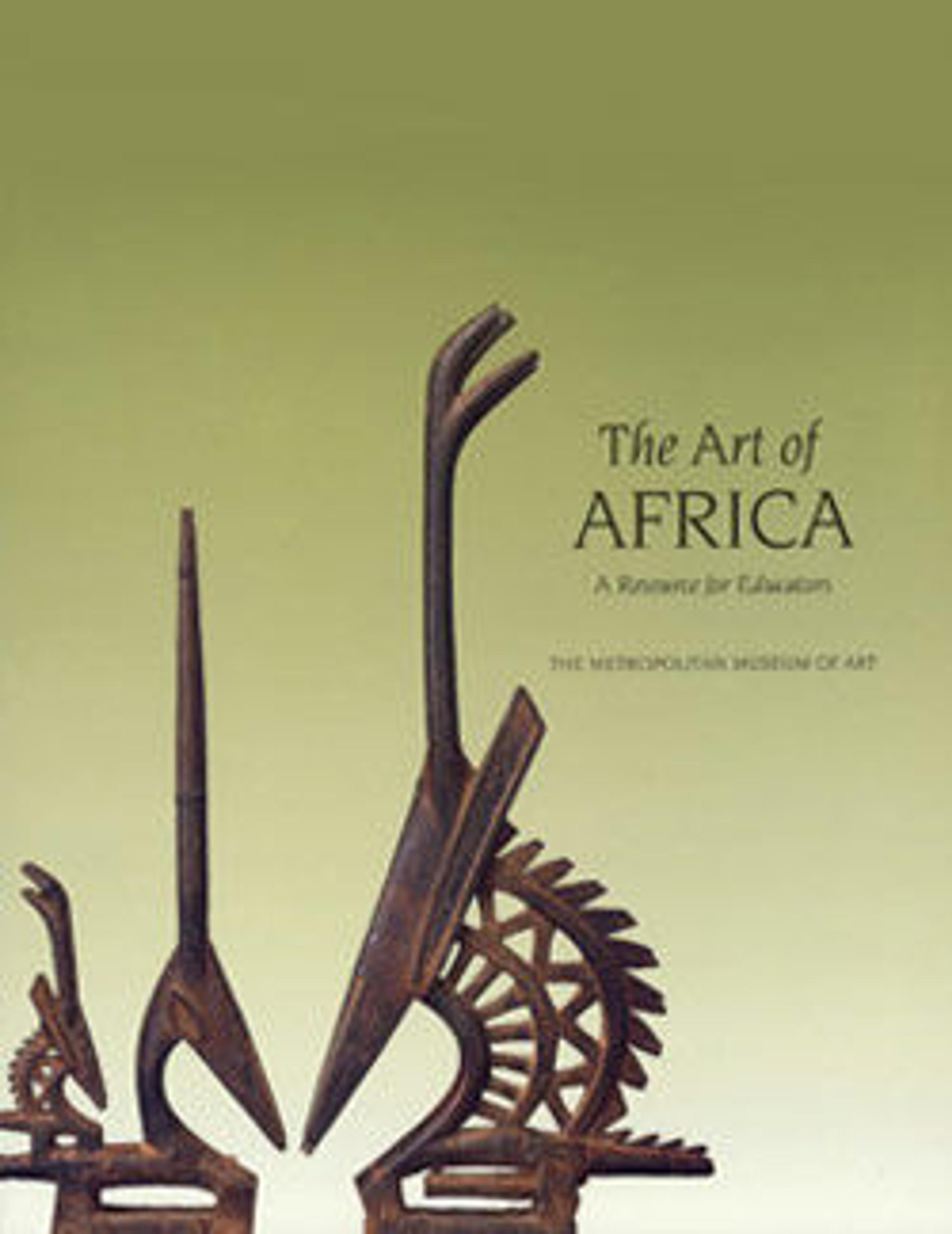Gẹ̀lẹ̀dẹ́ helmet mask
Two successive generations of sculptors contributed their talent to producing this dynamic headdress. It was begun around 1930 by the Ketu master Fagbite Asamu, remembered for introducing movable attachments to gẹ̀lẹ̀dẹ́ masks. In 1971 his son, Falola Edun, completed the work by carving the hinged snakes, a process filmed by Henry John Drewal.
The side extensions take the forms of two large snakes consuming antelopes, imagery often used in gẹ̀lẹ̀dẹ́ to suggest struggles between spiritual or social forces. Serpents were especially valued for their dramatic, fluid movement and regenerative associations.
Gẹ̀lẹ̀dẹ́ masks were repainted for each performance. Their bright and contrasting colors, sometimes directed by the carver and at other times contributed by members of the gẹ̀lẹ̀dẹ́ society, enhanced their impact in dusk performances. This mask was likely darkened before its sale to a non-African collector, reflecting the aesthetic preferences of the art market. Provenance histories like this reveal how makers, sellers, and buyers all shaped the appearance of works over time.
The side extensions take the forms of two large snakes consuming antelopes, imagery often used in gẹ̀lẹ̀dẹ́ to suggest struggles between spiritual or social forces. Serpents were especially valued for their dramatic, fluid movement and regenerative associations.
Gẹ̀lẹ̀dẹ́ masks were repainted for each performance. Their bright and contrasting colors, sometimes directed by the carver and at other times contributed by members of the gẹ̀lẹ̀dẹ́ society, enhanced their impact in dusk performances. This mask was likely darkened before its sale to a non-African collector, reflecting the aesthetic preferences of the art market. Provenance histories like this reveal how makers, sellers, and buyers all shaped the appearance of works over time.
Artwork Details
- Title:Gẹ̀lẹ̀dẹ́ helmet mask
- Artist:Fagbite Asamu (late 19th century–1970, Idahin, Republic of Benin)
- Artist:Falola Edun (ca. 1930–1971, Idahin, Republic of Benin)
- Date:ca. 1930–71
- Geography:Republic of Benin, Idahin
- Culture:Yoruba peoples, Ketu group
- Medium:Wood, iron nails, pigment
- Dimensions:H. 41 × W. 19 × D. 11 in. (104.1 × 48.3 × 27.9 cm)
- Classification:Wood-Sculpture
- Credit Line:Gift of Roda and Gilbert Graham, 1992
- Object Number:1992.225.1
- Curatorial Department: The Michael C. Rockefeller Wing
More Artwork
Research Resources
The Met provides unparalleled resources for research and welcomes an international community of students and scholars. The Met's Open Access API is where creators and researchers can connect to the The Met collection. Open Access data and public domain images are available for unrestricted commercial and noncommercial use without permission or fee.
To request images under copyright and other restrictions, please use this Image Request form.
Feedback
We continue to research and examine historical and cultural context for objects in The Met collection. If you have comments or questions about this object record, please contact us using the form below. The Museum looks forward to receiving your comments.
